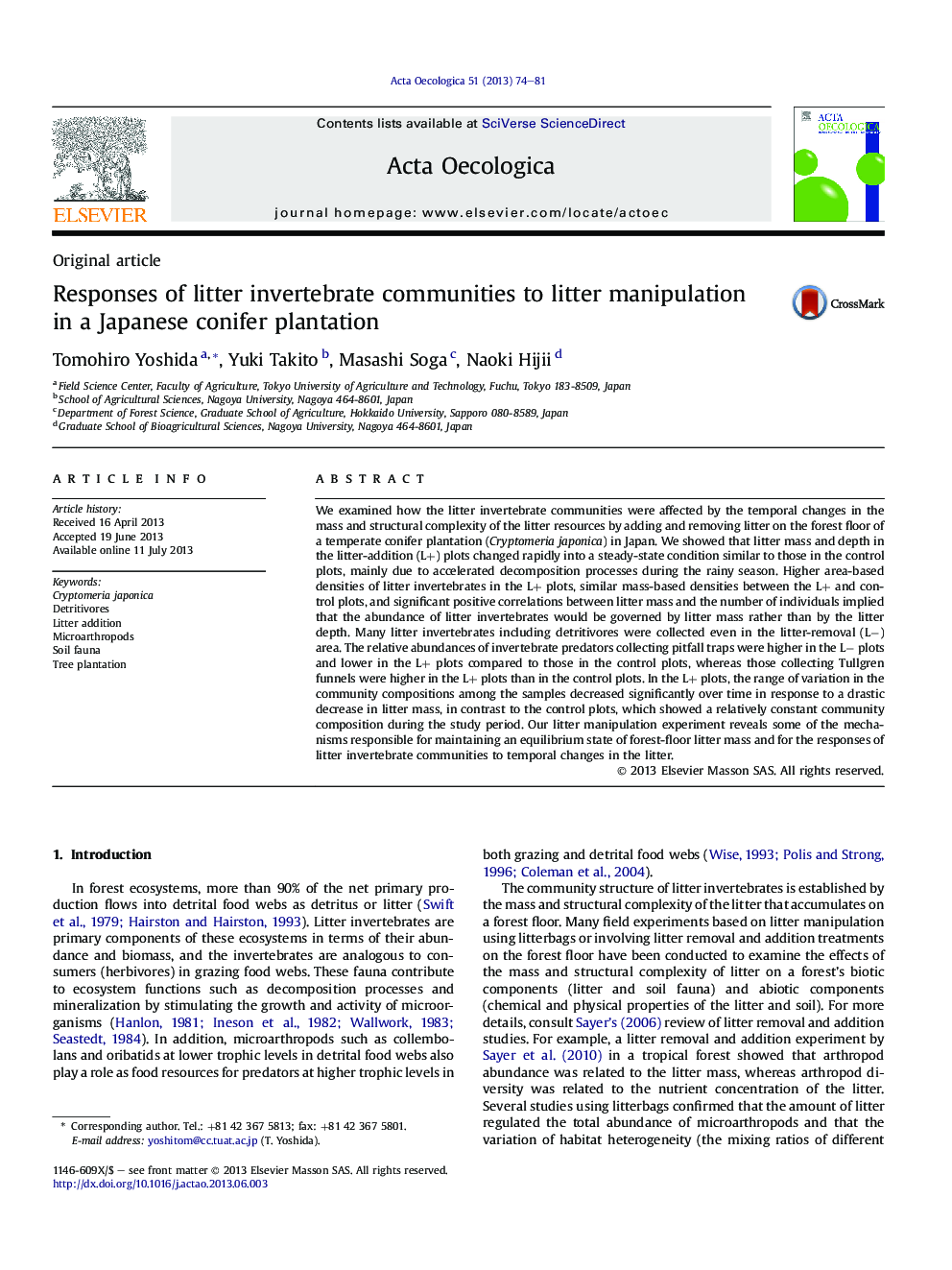| Article ID | Journal | Published Year | Pages | File Type |
|---|---|---|---|---|
| 4380788 | Acta Oecologica | 2013 | 8 Pages |
•We examined the responses of litter invertebrates to litter temporal changes.•Litter mass and depth decreased rapidly during the warm rainy season.•The abundance of litter invertebrates would be governed by litter mass.•Litter-addition resulted in a great variability in the community composition.
We examined how the litter invertebrate communities were affected by the temporal changes in the mass and structural complexity of the litter resources by adding and removing litter on the forest floor of a temperate conifer plantation (Cryptomeria japonica) in Japan. We showed that litter mass and depth in the litter-addition (L+) plots changed rapidly into a steady-state condition similar to those in the control plots, mainly due to accelerated decomposition processes during the rainy season. Higher area-based densities of litter invertebrates in the L+ plots, similar mass-based densities between the L+ and control plots, and significant positive correlations between litter mass and the number of individuals implied that the abundance of litter invertebrates would be governed by litter mass rather than by the litter depth. Many litter invertebrates including detritivores were collected even in the litter-removal (L−) area. The relative abundances of invertebrate predators collecting pitfall traps were higher in the L− plots and lower in the L+ plots compared to those in the control plots, whereas those collecting Tullgren funnels were higher in the L+ plots than in the control plots. In the L+ plots, the range of variation in the community compositions among the samples decreased significantly over time in response to a drastic decrease in litter mass, in contrast to the control plots, which showed a relatively constant community composition during the study period. Our litter manipulation experiment reveals some of the mechanisms responsible for maintaining an equilibrium state of forest-floor litter mass and for the responses of litter invertebrate communities to temporal changes in the litter.
